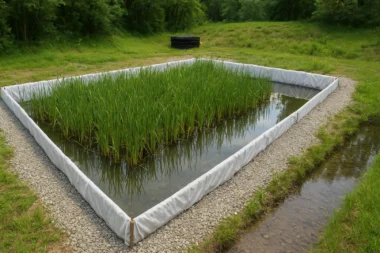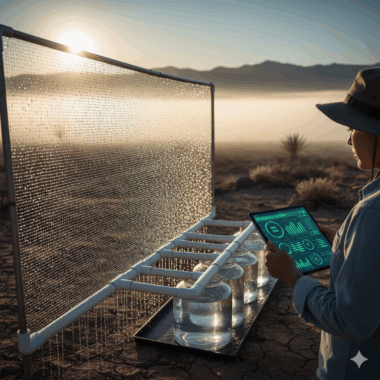Introduction
In an era of growing water scarcity and the need for efficient resource management, smart water grids have emerged as a transformative solution. Smart water grids integrate advanced technologies and data-driven systems to optimize water management, improve efficiency, and ensure the sustainable use of water resources. This article will explore how smart water grids are made, the components used in their construction, their diverse applications, and the sensors and data analytics employed to optimize water management processes.
How are smart water grids made?
Smart water grids are built by combining traditional water infrastructure with cutting-edge technologies and digital systems. The process involves several key steps:
- Sensor Deployment: Sensors are strategically installed throughout the water infrastructure network to collect real-time data on water flow rates, pressure levels, water quality, and leak detection. These sensors can be placed at different points, including reservoirs, pipelines, treatment plants, and consumer endpoints.
- Communication Network: A robust communication network is established to connect the sensors and enable seamless data transmission. This network can be based on technologies such as the Internet of Things (IoT), wireless communication, or wired and wireless systems.
- Data Integration and Management: The collected data from sensors is aggregated, processed, and stored in a central database or cloud-based platform. Advanced data management systems are employed to organize and analyze the data efficiently.
- Decision Support Systems: Data analytics and modeling techniques are applied to derive insights from the collected data. These insights enable informed decision-making regarding water allocation, demand forecasting, leak detection, and infrastructure maintenance.
Components Used in Smart Water Grids:
Smart water grids comprise several key components, including:
- Sensors: Various types of sensors are deployed to monitor different aspects of the water infrastructure, such as flow sensors, pressure sensors, water quality sensors, and leak detection sensors. These sensors provide real-time data for analysis and decision-making.
- Communication Infrastructure: A robust communication network connects the sensors, enabling data transmission and remote monitoring. This infrastructure includes wired or wireless connectivity solutions, such as cellular networks, Wi-Fi, or dedicated communication protocols.
- Data Management Systems: These systems involve databases, cloud-based platforms, and data analytics tools to store, process, and analyze the collected data. They facilitate real-time monitoring, historical analysis, and predictive modeling for optimized water management.
- Control and Automation Systems: Smart water grids may include automation technologies such as remote-controlled valves, smart pumps, and actuators. These systems enable the remote operation and control of water infrastructure based on data insights and predefined algorithms.
Applications of Smart Water Grids:
Smart water grids find application in various aspects of water management, including:
- Leak Detection and Reduction: Real-time monitoring and data analytics help detect leaks in the water distribution network, minimizing water losses and improving system efficiency.
- Demand Management: By analyzing consumption patterns and water usage data, smart water grids enable better demand forecasting and efficient water allocation to meet consumer needs.
- Water Quality Monitoring: Sensors deployed in smart water grids continuously monitor water quality parameters, ensuring timely detection of contaminants and prompt actions for water treatment and safety.
- Infrastructure Maintenance: Data analytics and predictive modeling assist in identifying maintenance needs, optimizing infrastructure upgrades, and extending the lifespan of water distribution systems.
Sensors and Data Analytics for Optimised Water Management:
Smart water grids employ various sensors and data analytics techniques, including:
- Flow Sensors: These sensors measure water flow rates and help identify anomalies, such as excessive consumption or leakages.
- Pressure Sensors: Pressure sensors monitor water pressure levels within the distribution network, helping optimize system performance and identify potential issues.
- Water Quality Sensors: These sensors detect parameters such as pH, turbidity, chlorine levels, and contaminants, enabling real-time water quality monitoring and prompt response to ensure a safe drinking water supply.
- Data Analytics: Advanced analytics techniques, such as machine learning and predictive modeling, are applied to the collected data to identify patterns, predict water demand, optimize water allocation, and improve overall water management practices.
Conclusion:
Smart water grids represent a paradigm shift in water management, combining advanced technologies, data analytics, and sensor networks to optimize the use of water resources. By leveraging real-time data, smart water grids enable efficient leak detection, demand management, water quality monitoring, and infrastructure maintenance. These systems offer the potential to conserve water, reduce losses, enhance operational efficiency, and ensure sustainable water management practices for a better future. As technology continues to advance, smart water grids will play a crucial role in addressing water challenges and promoting the efficient and sustainable use of this vital resource.



